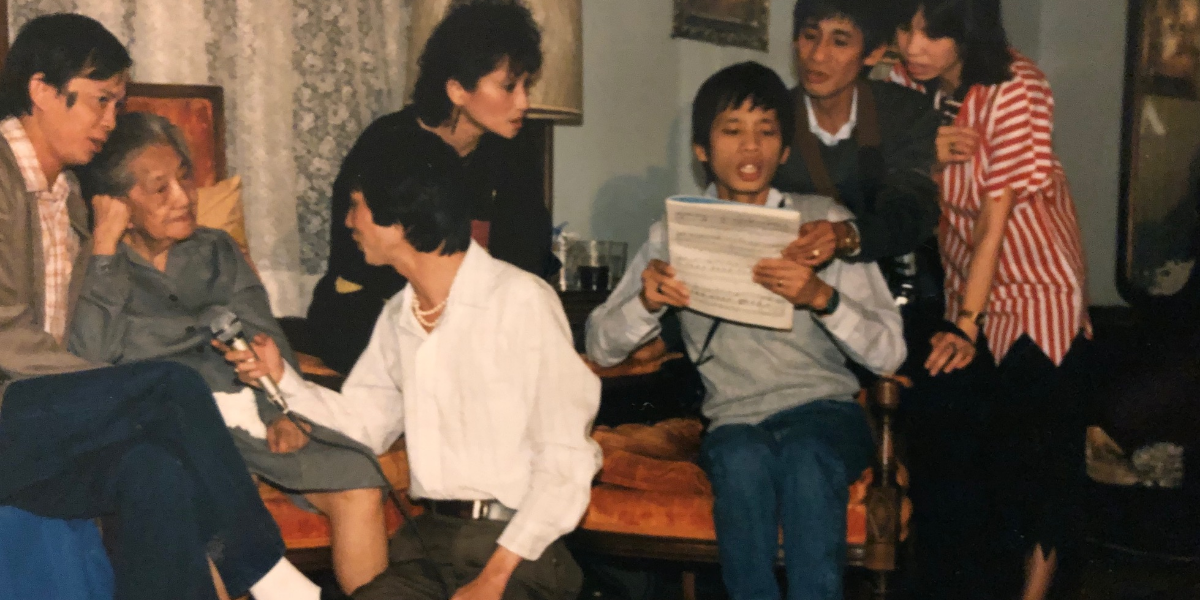How Did We Get Here? Part 3: Filipino Family Discovers Secret U.S. Citizenship
By Char Daston

How Did We Get Here? Part 3: Filipino Family Discovers Secret U.S. Citizenship
By Char DastonThis is the conclusion to our series “How Did We Get Here?” Over the past few days, we’ve talked with people who have researched their family’s migration stories — how their relatives arrived in Chicago, and what led them to move here in the first place. Here’s Part 1 and Part 2.
Laarni Livings’ great aunt came to Chicago in a wave of immigrant doctors and nurses from the Philippines. While visiting on a visa, Livings’ great grandmother learned she was a U.S. citizen. The Philippines was an American colony at the time, and Livings’ great grandfather had served in the U.S. Navy. The entire extended family, including 3-year-old Laarni, followed soon after.
Livings now lives in the South Loop with her husband and son. While economic pressure and citizenship laws played a part in her family’s mass migration, Livings said it was the American dream that drew her father, mother and siblings to Chicago.

Confusing U.S. Citizenship Rules for Filipinos
Laarni Livings: After the Spanish-American war, the Philippines was actually bought by the U.S. for $20 million.
Tony Sarabia: Hard to fathom.
Livings: And so at that point a lot of Filipinos joined the U.S. military, including my great-grandfather, who joined, I think, the U.S. Navy in 1917 during World War I… And so in my research, I saw in the U.S. census that he was actually in Boston for the 1920 U.S. Census. And at that time he was naturalized as a U.S. citizen.
Sarabia: And how did he become naturalized? Was it by way of joining the U.S. Army?
Livings: I think so, I mean that’s what I saw. I haven’t seen the paperwork of his actual naturalization, but he was naturalized when he was on the U.S.S. New Jersey.
Sarabia: I’m wondering… did he face any sort of racism when he was in the Navy?
Livings: My father says that he did tell him stories about being called racial slurs, and about being a brown man.
Sarabia: And he also — your great grandfather — never told you about your citizenship. Why not?
Livings: He came back to the Philippines not wanting to come back to the U.S. He married my great grandmother in 1922 and never told her that he was actually a U.S. citizen.
Sarabia: Why didn’t he want to come back to the U.S.?
Livings: He didn’t think we belonged here. The family — he didn’t think we were going to assimilate and belong in the U.S…
Sarabia: So Laarni, your dad moved to the U.S. a few years after your great grandmother. What prompted your dad to move here? Why did he want to move here?
Livings: Well, the story of my dad realizing he was going to come here came before that when my great-grandmother moved to the U.S. to visit my great-aunt. And so she wanted to stay and extend her visa, because she was here on a visitor’s visa… So they were at the immigration office and that’s when they… found out that she was actually a U.S. citizen, because of the Cable Act. The Cable Act states that an alien married to an American citizen before September 22, 1922 was automatically a U.S. citizen. So she was a U.S. citizen since she got married in April of 1922. And so that prompted our mass migration — our whole family.

Assimilating, But Also Connecting to Other Cultures
Livings: I am one of those people that, I think, assimilated very easily, because I was five. So I came right into school in Albany Park, and it was a very diverse school. There were a lot of immigrants just like me, so I never felt like I was out of place, so that was a really positive experience for me.
Sarabia: Were there any moments, though, as a young kid growing up, where you wanted to seek out other Filipinos your age — I mean, did that come pretty easily here in the Chicago area?
Livings: Well, my family — all my dad’s siblings and all my cousins — we all lived within a block of each other, so we had that support.
Sarabia: How about outside of family though?
Livings: You know, for me, I wasn’t really seeking other Filipinos, because all my friends were from all around the world. Like I grew up with Pakistanis, Syrians, you know, everywhere. Yugoslavians — I mean, there was still Yugoslavia back then. I never sought that because, you know, I saw the U.S. as this melting pot… I really really wanted to assimilate.
Researching Her Family History
Livings: My great aunt [the doctor] is actually alive. So she’s the one who told me the story… so I actually had a long conversation with her again yesterday, and, you know, she claims that she can’t remember everything, but she’s still sparky — she still knows it all.
LEARN MORE: Rizal Community Center of Greater Chicago

